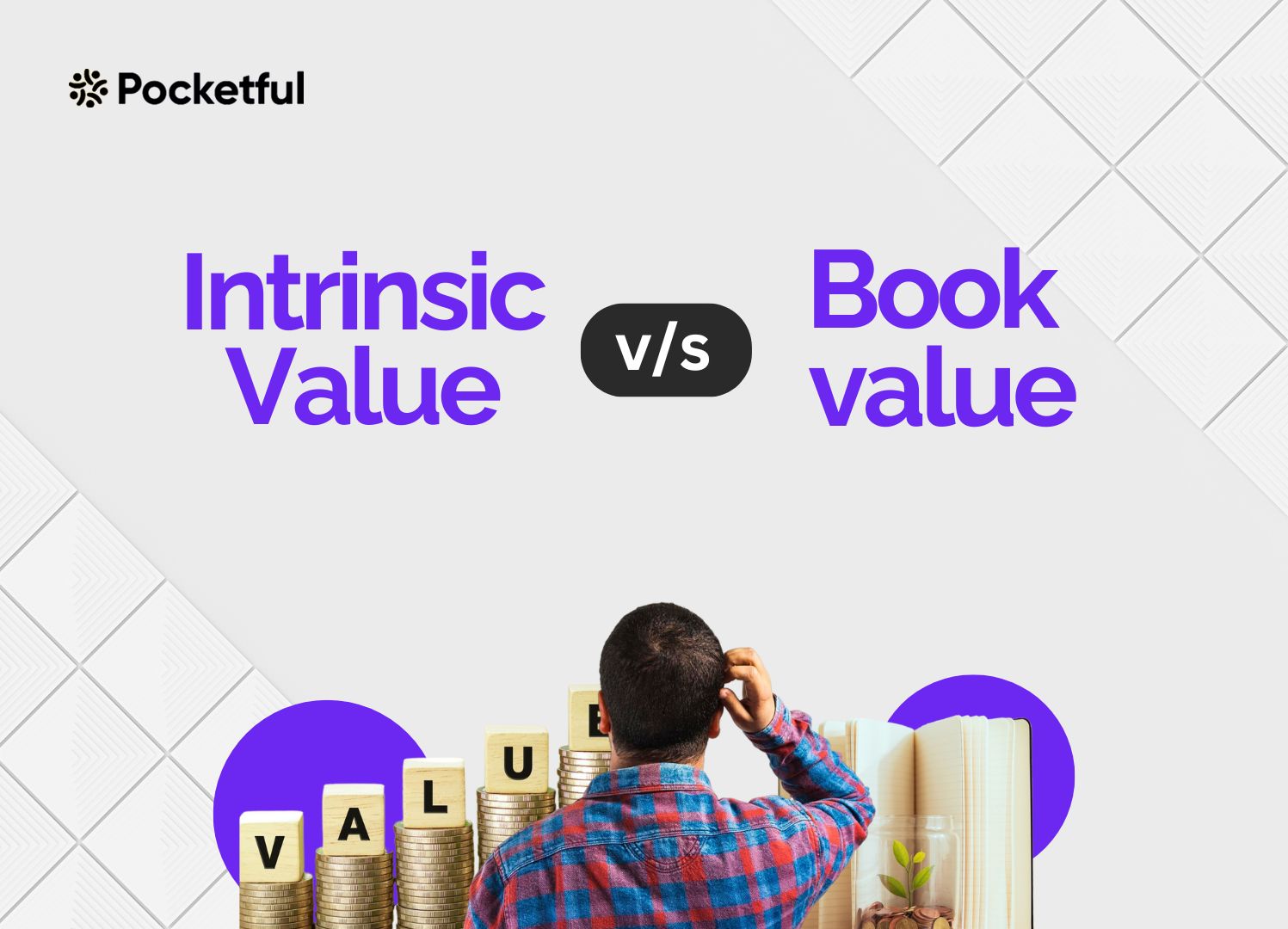| Type | Description | Contributor | Date |
|---|---|---|---|
| Post created | Pocketful Team | May-03-24 | |
| Add new links | Nisha | Feb-25-25 |
Read Next
- Rakesh Jhunjhunwala Portfolio 2025: Top Holdings & Strategy
- BankBeES vs Bank Nifty – Key Differences
- Current Ratio vs Quick Ratio Key Differences
- Best REIT Stocks in India 2025
- Best Data Center Stocks in India 2025
- Best Rare Earth Stocks in India
- Top 10 investment banks in India
- What Is iNAV in ETFs?
- Best Investment Options in India 2025
- Best Energy ETFs in India 2025
- Radhakishan Damani Portfolio 2025: Stocks & Strategy Insights
- Best SEBI Registered Brokers in India
- Best Air Purifier Stocks in India
- Best Space Sector Stocks in India
- Gold Rate Prediction for Next 5 Years in India (2026–2030)
- Difference Between Equity Share and Preference Share
- Vijay Kedia Portfolio 2025: Latest Holdings, Strategy & Analysis
- Raj Kumar Lohia Portfolio 2025: Holdings, Strategy & Analysis
- How to Earn Passive Income Through Dividend-Paying Stocks in India
- Top 10 Richest Investors in the World 2025 – Net Worth, Key Investments & Strategies
- Blog
- intrinsic value vs book value
Intrinsic Value vs Book Value


Have you ever wondered if a company is worth more or less than its price tag?
Book value gives a snapshot of a company’s financial health based on accounting records, but it does not tell the whole story. That is where intrinsic value comes in. It is like looking into a crystal ball, trying to estimate a company’s true worth based on its future potential.
In this blog, we will deep dive into book value and intrinsic value, uncovering the key differences, and why they are important for investors.
Read Also: How to find and identify undervalued stocks
Intrinsic Value
The term intrinsic value gets thrown around a lot in finance, especially when talking about stocks and businesses. It refers to an asset’s inherent worth, independent of what the market is currently willing to pay for it.
There are two primary approaches to understand the intrinsic value.
1. Present Value of Future Cash Flows
This is a common approach for stocks. The idea is that a company’s true value is based on the amount of cash it is expected to generate in the future, discounted back to the present day.
The most common method for stocks is the discounted cash flow (DCF) analysis. This approach involves estimating a company’s future cash flows, and then discounting them back to their present value. The idea is that a company’s intrinsic value is essentially the sum of all its future cash flows.
The DCF approach can be summarized as follows:
- Estimating future cash flows by analysing the company’s financial statements, and industry trends to forecast its future earnings and cash flow generation.
- Choose a discount rate that reflects the time value of money and the riskiness of the investment. A higher-risk company would require a higher discount rate.
- Discount each year’s cash flows to present value using the chosen discount rate.
- The sum of the discounted cash flows represents the company’s intrinsic value.
2. Underlying Value of the asset
This is more general and can apply to anything you own, not just stocks. It is the value of the parts that make up the whole.
Furthermore, the market price of an asset can deviate significantly from its intrinsic value due to factors like market sentiment, psychology, and short-term fluctuations.
Also, the significance of intrinsic value was underscored by legendary investor, Warren Buffet in his investment strategy. To buy companies at a discount and hold them for the long run, he looks to invest in businesses that, in his opinion, are trading below their fundamental value.
Book Value
Book value refers to the accounting value of a company’s net assets on its balance sheet. In other words, it reflects what a company would be worth if it liquidated all its assets and paid off all its debts. It essentially represents the shareholder’s equity in the company.
A high book value can indicate a financially stable company with a significant amount of assets.
However, book value does not necessarily reflect the current market value of a company or its future growth potential. This is because value relies on the historical costs of assets, which might not reflect their current fair market value.
Calculation of Book Value
Book Value = Total Assets – Total Liabilities
Where Total Assets include all the company’s valuable possessions such as property, inventory, cash, and investments.
Total liabilities include all the money the company owes, such as loans, accounts payable, and accrued expenses.
Book Value per share is derived by dividing the book value of the company by the number of outstanding shares.
Book Value per share = Book Value / Number of Outstanding Shares
Additionally, book value is an important metric for investors as it provides insight into the underlying value of a company’s assets.
Investors often compare a company’s stock price to its book value per share to analyse whether the stock is undervalued or overvalued relative to its asset base. However, keep in mind that most of the growth companies trade well above their Book value.
Book Value vs. Intrinsic Value
| Basis | Book Value | Intrinsic Value |
|---|---|---|
| Basis | Book Value | Intrinsic Value |
| Definition | Represents the net value of a company’s assets after subtracting its liabilities | Represents the true worth of an asset based on fundamental analysis. |
| Calculation | BV = Total Assets – Total Liabilities | Intrinsic Value is often estimated using various methods such as DCF analysis. |
| Perspective | Focuses on the balance sheet and tangible assets. | Considers future earnings, growth prospects, and risk factors. |
| Limitations | It does not account for intangible assets like goodwill or intellectual property | It is subjective and is dependent on the analyst’s assumptions and methodology. |
| Market Relationship | It can serve as a floor for a company’s stock price | A stock trading below intrinsic value may be considered undervalued, while one trading above it may be considered overvalued. |
Read Also: The Art of Value Investing: Meaning and Strategies
Conclusion
Book value offers a reliable, historical perspective on a company’s financial standing. Intrinsic value, on the other hand, takes you on a journey into the future, estimating a company’s future growth. By wielding book value and intrinsic value analysis, you become a more well-rounded investor, equipped to make informed decisions and uncover hidden gems in the stock market.
Remember, successful investing is all about peering beyond the surface and understanding the underlying value of a company.
Frequently Asked Questions (FAQs)
What is Book Value?
Think of it as a company’s net worth on paper, i.e., what shareholders would get if the company shut down and sold everything.
Is a high book value good?
Not necessarily. A company with a lot of assets might not be using them well if its stock price is low.
Which one is more important, Book value or Intrinsic Value?
They both play an essential role in the investment world. Book value can show potential bargains, while intrinsic value helps identify long-term growth prospects.
Is a high intrinsic value good?
Generally, yes. But keep in mind that it is an estimate. Thus, take into account any risks that can have an impact on future profits.
Can intrinsic value ever be negative?
Yes, if a company is expected to lose money in the future, its intrinsic value could be negative.
Disclaimer
The securities, funds, and strategies discussed in this blog are provided for informational purposes only. They do not represent endorsements or recommendations. Investors should conduct their own research and seek professional advice before making any investment decisions.
Article History
Table of Contents
Toggle